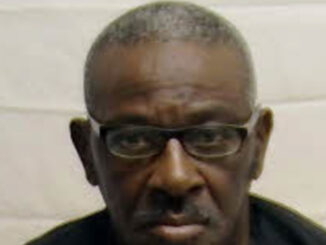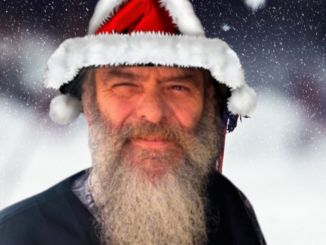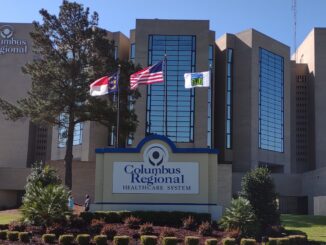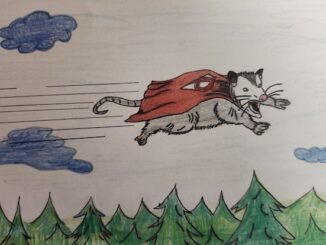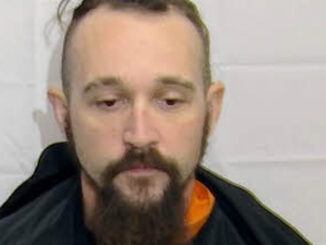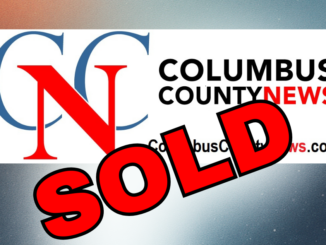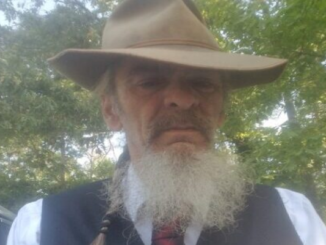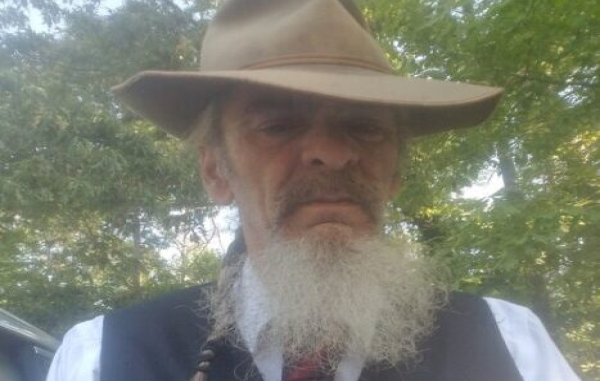
In those days, a newspaper office was a magical place.
People were always moving, talking, coming and going. A single BB-sized hole in the darkened front door allowed the sunlight to show dancing dust motes in the air. Telephones back then were enormous plastic, Bakelite or metal devices with dials; the fancier ones, on the desks of the important people, had one or two extra lines indicated by lights that blinked when someone was on hold.
It was rarely a quiet place. The telephones jangled, and they were loud. There were no computers or word processors, so everything was written on typewriters, fingers striking keys that slammed a letter against the paper through a thin ribbon of ink, each letter raised by levers and gears, dozens of times per minute, hundreds of times per hour, thousands of times per day, each keystroke making its own distinctive clack. A police scanner screeched and ethereal voices told of car wrecks, fires, crime and general mayhem. The train rattled by on schedule, shaking the building, sometimes causing plaster dust to sprinkle from the ceiling.
There were huge books of pictures, the mattes used for creating advertisements. The pictures were carefully cut out and pasted with type to create ads for clothing, tools, cars, houses, medicines; you could find anything you needed in a small town if you read the newspaper and looked at the ads, and they were created using the mattes. Along the dark, paint-peeling walls, stained by more than six decades of nicotine and smoke from the railroad out the front door, there were bound copies of every edition of the paper, all the way back to World War I.
Passing through the front office one entered a room of burning bright lights and alchemy, where negatives were created of the assembled pages, and those negatives burned into treated metal plates that in turn picked up the ink on the Goss Community press in the back room. We boys were strictly prohibited from looking at the bright lights when a plate was burning, which meant we naturally found excuses to do so.
The darkroom for regular photography was there, too, where film was developed, washed and fixed, then put into an enlarger to produce images of meetings, wrecks, ribbon cuttings, murders, political candidates, beauty queens, big watermelons and little kids, all the parts of life that make up a community newspaper. The chemicals stank, the room was always in a dark twilight unless the plates were burning, and the men who worked on the light table were always eerily lit from below while they marked out dust and scratches and errors on the negatives that would become our newspaper.
From there one went into the composing room, where the giant smelter sat idle in one corner, its days of melting lead for ingots long gone. The ingots had been used to feed the Ludlow and Linotypes. Each machine used an ingot hung from a chain to melt down for the lead that was required for molding the words.
The old Linotypes stood tall and magnificent at the end of the composition tables where bits and pieces of paper and photographs were assembled into the day’s edition. The Linotypes literally overshadowed the squat, often-balky Compugraphic machines, phototypesetters that produced strips of perfectly laid-out paper that was then waxed onto the pages – when they worked. The Compugraphics leaked a nasty fluid, and required careful hand to repair. A skilled mechanic with a hammer could make a Linotype start working again.
The Ludlow and Linotypes were of another era, when the operator’s keystrokes on the board created words, sentences and columns in lead, which were then clamped into a tray called a chase and attached to a press much different than the modern Goss in the back room. A Linotype was made of iron and steel, and required strength to operate. You could break the plastic keys on a Compugraphic.
The Ludlow was special to me; it helped me improve my reading skills. As a little child, somewhere past a toddler but still a little, I stood on a drink crate between my father’s legs as he assembled headlines and sometimes copy upside and backwards on the table beside the Ludlow.
The old lead type machines were rarely used anymore; they had gone by the wayside. Sometimes a headline or something special that couldn’t be done on the Compugraphic was created using the lead type machines. The chase would then have to be carried to the print shop on the other side of the building, attached to the old letter press, and the resultant print clipped and pasted into place.
I barely remember one time when the Compugraphic went completely out, and two pages of the paper were created the old-fashioned way. It was amazing to see the sticks of type slide out of the hulking Linotype, a retired hound dog released on a coon no other dog could bring to tree.
Everything in the entire building was magic to a little kid, even one on the verge of adolescence. At the risk of sounding idolatrous, the newspaper office was a church of sorts, and everyone there made a sacrifice to the press in the back room. Each person was an acolyte of some kind and my father was the preacher, leading them in creating a new newspaper every single day, five days a week, with specials at election time and during tobacco market season. Every sound, every smell, every keystroke on a typewriter, every kind word or curse, every picture or handwritten country correspondent column, every Associated Press wire story about farflung places like Hanoi and New York and Paris and Buenos Aires – everything was directed at producing eight or ten or even sixteen plates that were attached to the press, which then spat out the thousands of newspapers we sold and delivered every afternoon.
Even when everything didn’t work right, it was magical to a little kid whose daddy was his role model and hero, a little kid who wanted to be just like his father, whose friends had fought in World War II or been punched in the nose by a state legislator or been kicked off a train for trying to get a picture of Ted Williams and Marilyn Monroe, then lived to write those and so many other stories.
But on April 28, 1978, the press was silent. The machines were cold. The AP ticker was unplugged.
Our newspaper, like Robert Ruark’s old, crippled lion, was shut down. There was one last roar of defiance, but there was no merciful coup de gras. Just a last sheaf of papers flowing down the conveyor belt, and dead silence.
The silence was frightening, and I went to find my father. His office in a corner up front was always a safe haven, where U.S. Senators, a governor, police and regular people knew there was someone they could always trust.
As I rounded the corner in the almost-silence, I heard something I had never heard before.
I heard my father crying, for the first time in my life.
That sound was far more frightening than anything I had ever heard.
The magic was gone.
For 21 years, the Old Man wrote a column every year, saying goodbye to The Dunn Dispatch. He began writing the column when he was working at another community newspaper, and continued even after he left there. Sometimes it was printed, sometimes it wasn’t.
In 2001, he lay in his hospital bed, too weak to sit up. A few days before he died, he asked me to carry on his tradition. I promised I would do so, and for 23 years, I have kept my word.
I also made a promise to myself that day, about another column. Lord willing, you’ll read that one in a few days.





